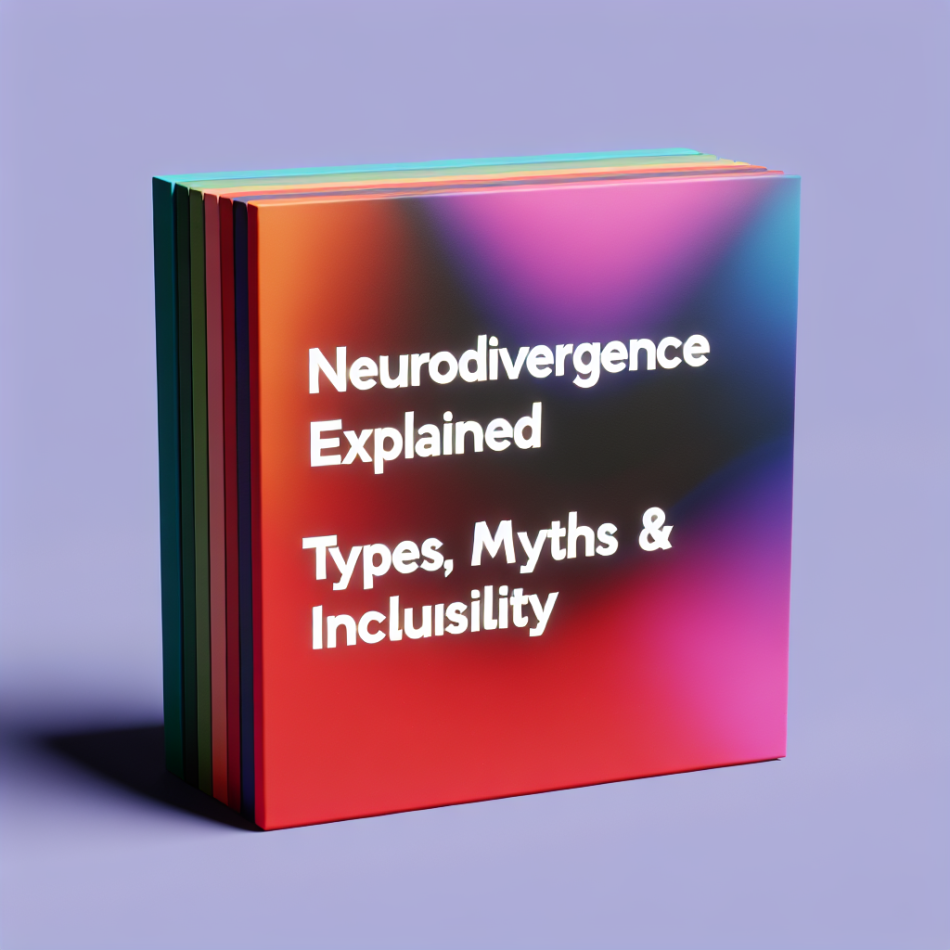Understanding Neurodivergence: A Spectrum of Cognitive Diversity
Neurodivergence refers to variations in how the brain processes information, learns, or interacts with the world. These differences, often innate, challenge traditional notions of “normal” cognition. From ADHD to autism, neurodivergent individuals bring unique perspectives and strengths. This article explores common types of neurodivergence, their characteristics, and why recognising this diversity is vital for fostering inclusivity. Let’s delve into the spectrum that shapes human experience.
Common Types of Neurodivergence
Neurodivergence encompasses a range of conditions, each with distinct traits. While this list is not exhaustive, the following are widely recognised:
- Attention Deficit Hyperactivity Disorder (ADHD): Characterised by differences in attention regulation, hyperactivity, and impulsivity. Individuals may struggle with focus but excel in creative problem-solving.
- Autism Spectrum Disorder (ASD): A developmental condition affecting communication, social interaction, and sensory processing. Autistic individuals often have intense interests and unique analytical abilities.
- Dyslexia: A learning difference impacting reading, writing, and spelling. Dyslexic thinkers frequently exhibit strong spatial reasoning and narrative skills.
- Dyspraxia (Developmental Coordination Disorder): Affects motor coordination and planning. Those with dyspraxia may face challenges with tasks like handwriting but often display verbal creativity.
- Tourette Syndrome: Involves involuntary movements or vocalisations (tics). Many with Tourette’s also demonstrate heightened focus and resilience.
- Dyscalculia: A learning difficulty related to numbers and mathematical concepts. Strengths often lie in verbal communication or artistic fields.
The Importance of Recognising Neurodivergence
Neurodivergence is not a deficit but a difference. Historically, many conditions were pathologised, but modern perspectives emphasise acceptance and accommodation. For instance, autistic individuals might struggle with social cues but offer unparalleled attention to detail. Similarly, ADHD hyperfocus can drive innovation in dynamic environments. Recognising these strengths shifts the narrative from “disability” to “diversity,” empowering individuals to thrive in supportive settings.
Early identification is crucial. Schools and workplaces that adopt flexible strategies—like sensory-friendly spaces or alternative learning tools—help neurodivergent people excel. However, stigma persists: 60% of autistic adults in the UK report feeling socially isolated, underscoring the need for systemic change.
Addressing Myths and Misconceptions
Misunderstandings about neurodivergence often perpetuate stereotypes. For example:
- “ADHD is just a lack of discipline.” In reality, ADHD involves neurological differences in dopamine regulation, affecting motivation and focus.
- “Autistic people lack empathy.” Many autistic individuals experience intense empathy but may express it differently.
- “Dyslexia is about low intelligence.” Dyslexia has no correlation with IQ; it’s a specific processing difference.
Education is key to dismantling these myths. Public campaigns, like Autism Acceptance Month, and lived-experience storytelling foster empathy. Additionally, media representation matters—authentic portrayals in shows like Heartbreak High (featuring an ADHD character) normalise neurodiversity.
Embracing Neurodiversity in Society
Creating inclusive environments requires proactive steps. In education, multisensory teaching methods benefit dyslexic learners, while clear routines support autistic students. Employers can offer flexible hours or noise-cancelling headphones to reduce sensory overload. Small adjustments, like accepting fidgeting during meetings, validate neurodivergent needs without compromising productivity.
On a broader scale, policy changes are essential. The UK’s Equality Act 2010 protects neurodivergent individuals from discrimination, but gaps remain. Advocates call for better mental health resources and workplace training to bridge these gaps. Crucially, involving neurodivergent voices in decision-making ensures solutions are grounded in real experiences.
Conclusion: Celebrating Cognitive Diversity
Neurodivergence—from ADHD to dyslexia—represents a natural variation in human cognition. Understanding these differences fosters empathy, innovation, and equitable opportunities. By rejecting outdated stereotypes and embracing adaptive strategies, society can unlock the potential of neurodivergent individuals. Whether through workplace adjustments or inclusive education, every step towards acceptance enriches our collective experience. Let’s move beyond mere tolerance to genuine celebration of the minds that shape our world uniquely.
